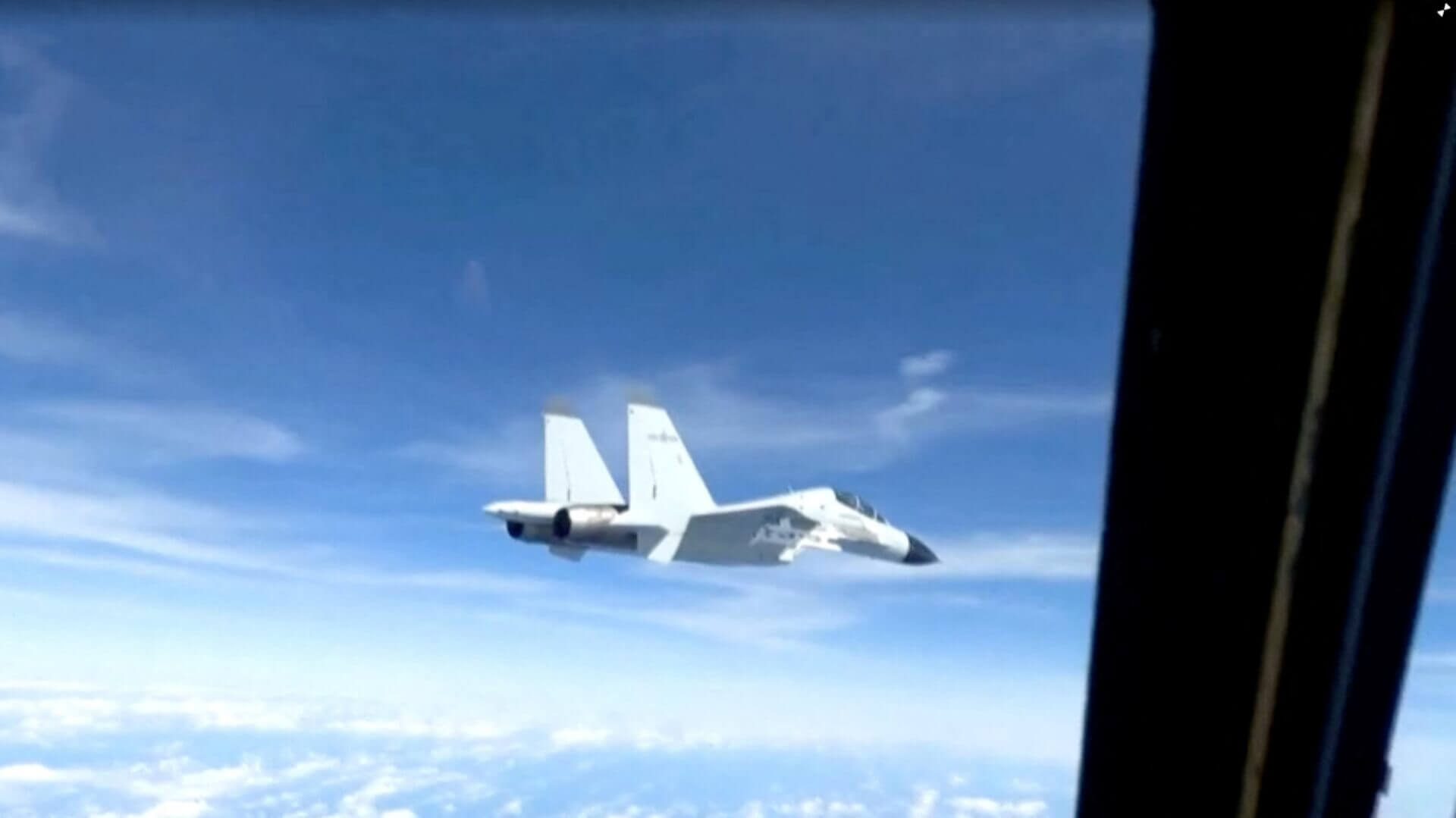The United States (US) military said on Thursday that a Chinese warplane flew dangerously and nearly collided with a US military aircraft over the South China Sea (SCS) last week, while it was conducting a reconnaissance mission.
In a statement on Thursday, the US military’s Indo-Pacific Command said that the J-11 fighter pilot of the Chinese People’s Liberation Army-Navy (PLAN) had “performed an unsafe manoeuvre” in the air when it was intercepted by a US Air Force RC-135 aircraft, which had been “lawfully conducting routine operations” in the international airspace over the SCS.
The statement noted that the unsafe manoeuvre happened “within 20 feet of the nose of the RC-135,” which forced the American aircraft “to take evasive maneuvers to avoid a collision.” It also released a declassified video of the incident along with the statement.
The Command stressed that it remains “dedicated to a free and open Indo-Pacific region” and will “continue to fly, sail and operate at sea and in international airspace with due regard for the safety of all vessels and aircraft under international law.” “We expect all countries in the Indo-Pacific region to use international airspace safely and in accordance with international law,” it concluded.
A spokesperson for the command told The New York Times in an email that there has been “an alarming increase in the number of unsafe aerial intercepts and confrontations at sea by PLA aircraft and vessels.” They added that the latest incident reflected “a concerning trend of unsafe and dangerous intercept practices” by the Chinese military and was “of grave concern” to the US.
Close encounters... A Chinese "fighter pilot performed an unsafe maneuver...the PLAN pilot flew an unsafe maneuver by flying in front of and within 20 feet of the nose of the RC-135, forcing the RC-135 to take evasive maneuvers to avoid a collision."https://t.co/xlwpmnU0Ny
— Emily Feng 冯哲芸 (@EmilyZFeng) December 29, 2022
Another spokesperson explained the US military’s eight-day delay in announcing the encounter, arguing that, “Disclosure of this type takes time to verify details, obtain and declassify imagery and make proper notifications to other government agencies.”
A day after the incident occurred, the Command issued a statement saying that its force was “spending this holiday season preserving a Free and Open Indo-Pacific that benefits all.”
It added that along with its allies, the US military was “closely tracking” China’s military activities in highly volatile SCS and the Philippine Sea, as well as China’s ongoing exercise with Russia in the East China Sea and would “continue to oppose any military pressure or coercion” in the region.
The Command also emphasised that it will “continue to be forthright in opposing any behavior that challenges and bends the rules which the international community has relied upon to maintain stability and peace.”
US naval vessels and aircraft often traverse through the SCS and the Indo-Pacific at large.
China, which considers the strategically important maritime body to be part of its own territory, has often criticised the moves as “provocations,” accusing the US of attempting to “militarise the SCS through maritime hegemony.”
However, the US Navy has argued that it is simply asserting its navigational rights and freedoms consistent with international law.

